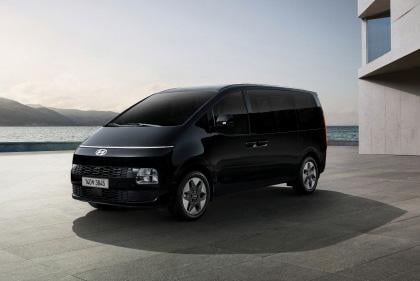

Damion Smy
2026 Hyundai Staria update launched in Korea, due in Australia next year
4 Days Ago
Need to carry seven passengers often? The futuristically-styled Staria's van-like proportions help it to punch above even the Kia Carnival.
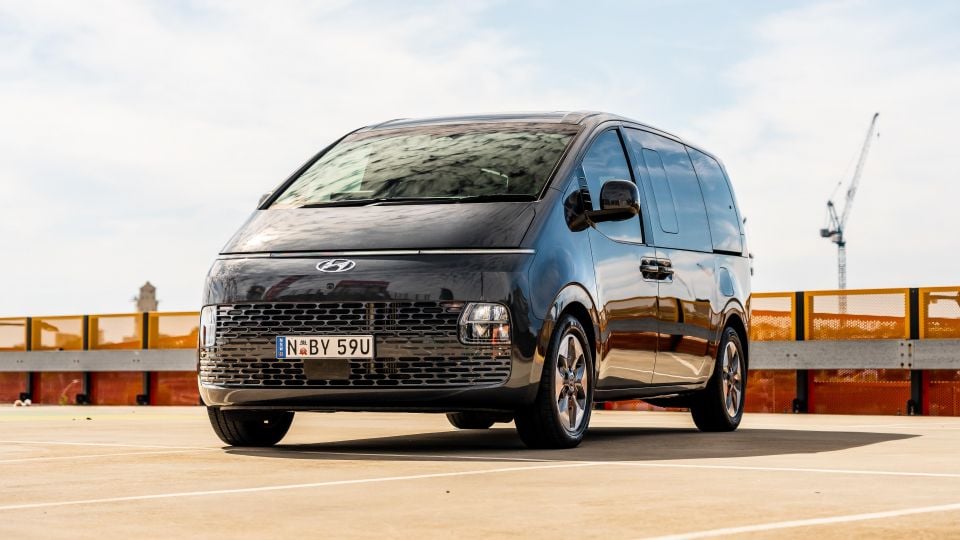


Quickly see how this car stacks up against its competition. Select any benchmark to see more details.
Where expert car reviews meet expert car buying – CarExpert gives you trusted advice, personalised service and real savings on your next new car.
While the 2000s didn’t bring flying cars like Back to the Future promised, carmakers are producing some vehicles that look like spaceships.
The Hyundai Staria is a world away from its iMax predecessor, and forges a new design path for vans in general. A front light bar, gaping front grille, and maximum interior space concept all combine for a very distinctive look.
It may not be as handsome as the mechanically-related and top-selling Kia Carnival, but the Staria is designed for those who care less about blending into the SUV crowd and prioritise practicality above all.
Here we have the top-spec Hyundai Staria Highlander 2.2D AWD, a diesel-powered flagship that’s knocking on the door of premium van-based competitors like the Mercedes-Benz V-Class and Volkswagen Multivan.
Is Korea onto another winner in the people mover segment? I took it on a long weekend away to find out.
Our Highlander Diesel tester is the most expensive variant in the range, starting at $66,500 before on-road costs. Using a Victorian postcode, you’re looking at just over $73,000 drive-away before options.
The Staria line-up is largely priced in line with the seven-seat Santa Fe SUV, kicking off at $48,500 for the entry-level Staria 3.5 V6 FWD.
While the high-spec Staria is priced pretty much on par with the equivalent Kia Carnival Diesel ($71,890 D/A), the Hyundai is unique in offering all-wheel drive (AWD) with the diesel powertrain. For reference, the most affordable Volkswagen Multivan with all-wheel drive is $70,000, while a Highline with similar equipment levels to the Staria Highlander is approaching $100,000.

2023 Hyundai Staria pricing:
Key rivals include:
All prices exclude on-road costs unless specified
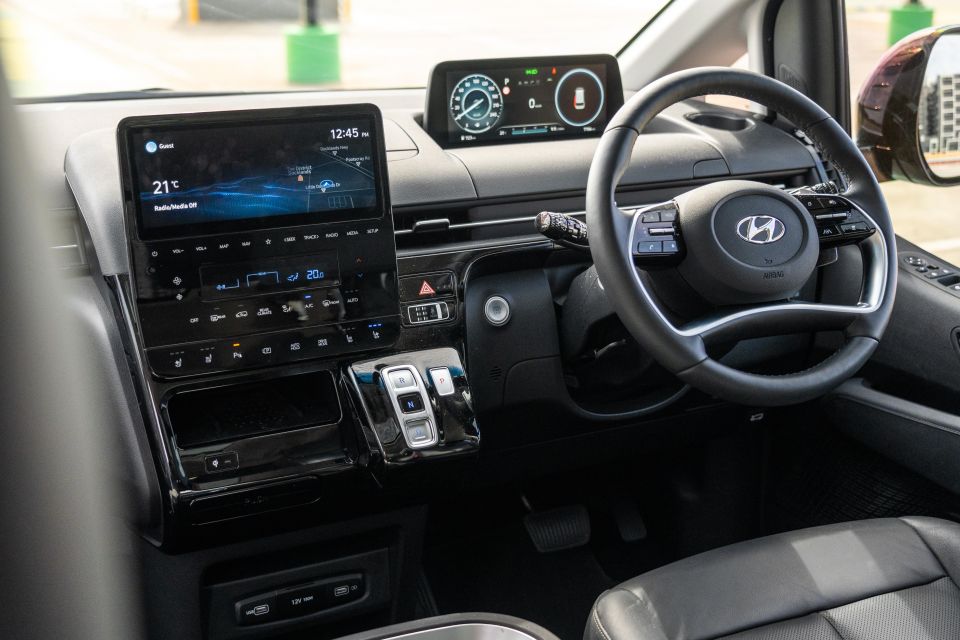
Buy your new car without the stress. It's fast, simple and completely free.

Great service from Travis and team, second time I have used this business would not hesitate to recommend them to anyone
Craig C.
Purchased a Ford Ranger in Sunshine Coast, QLD
CarExpert helped Craig save thousands on his Ford Ranger, now let us save you on your next new car.
Find a dealThe Staria’s futuristic theme carries on inside but less ostentatiously so, with a focus on minimalism to maximise space.
Up front there’s an upright dash fascia featuring a shift-by-wire gear selector, a high-set 10.25-inch infotainment touchscreen with satellite navigation and high-resolution graphics, as well as another 10.25-inch display ahead of the driver acting as a virtual instrument and supervision cluster.
The displays themselves are crisp and offer quick loading times and animations, and the capacitive controls on the centre stack for the climate controls get a little smudged with fingerprints but are some of the better controls of this type – it’s essentially lifted from the Tucson.
In old-school van fashion, you’re perched nice and high with a huge glasshouse. This sort of panoramic, commanding view of the road ahead is something that is increasingly rare in the new car market.
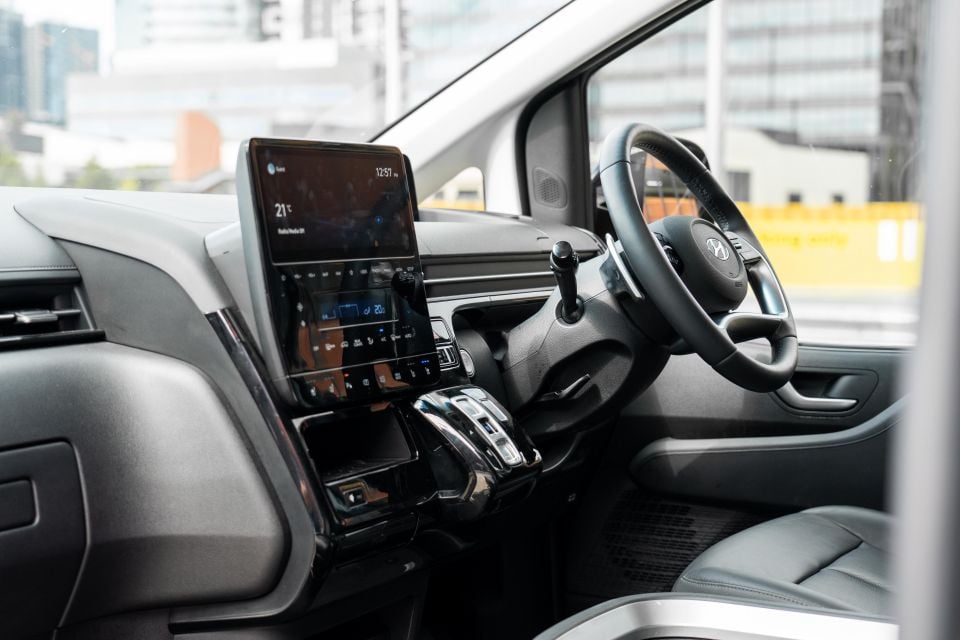
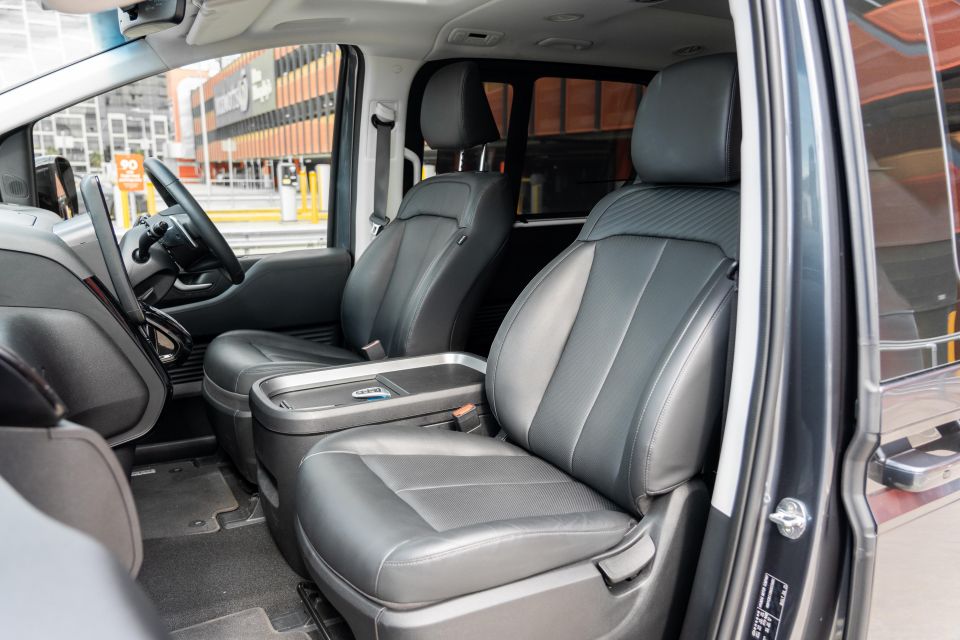
Add the high roof and there’s real impression of airiness and outright space.
The Staria’s commercial vehicle links are evident in the materials, which all feel hard-wearing rather than the more supple, luxurious surfaces you’ll find in something like a Kia Carnival. The Highlander does get ‘premium’ dash and door materials, however, which are a little more supple.
You’re sat in comfortable seats though, and the driver gets full electric adjustment including four-way lumbar, but no memory. Annoyingly, the front passenger seat is manual despite the Highlander’s lofty price tag. Regardless, they’re heated and ventilated in this spec, and the steering wheel is also heated.
Our tester featured a black interior which could be seen as a bit boring, though there are Beige/Black and Blue/Black two-tone leather options available on the Highlander for $295.
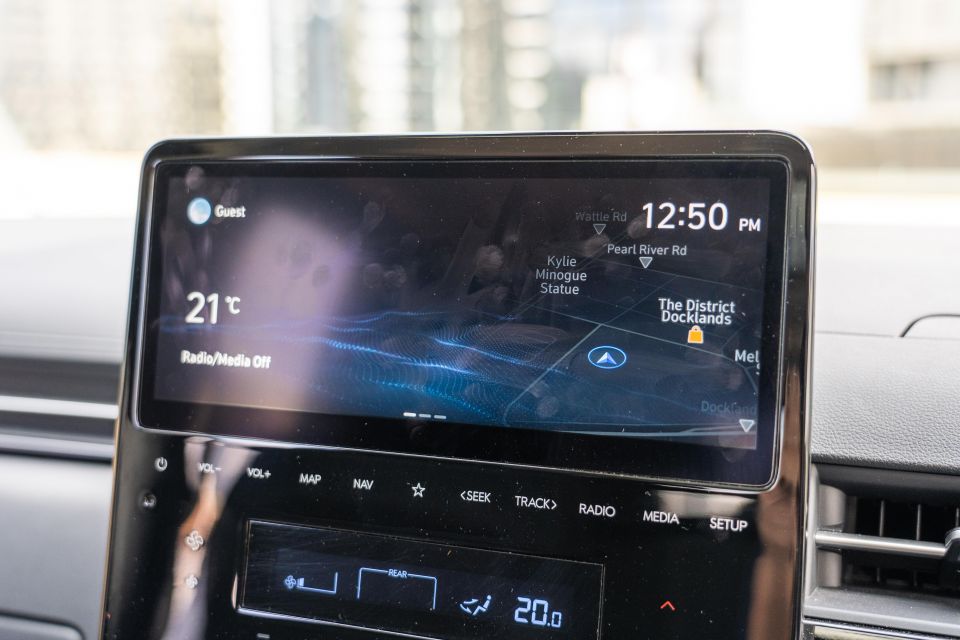
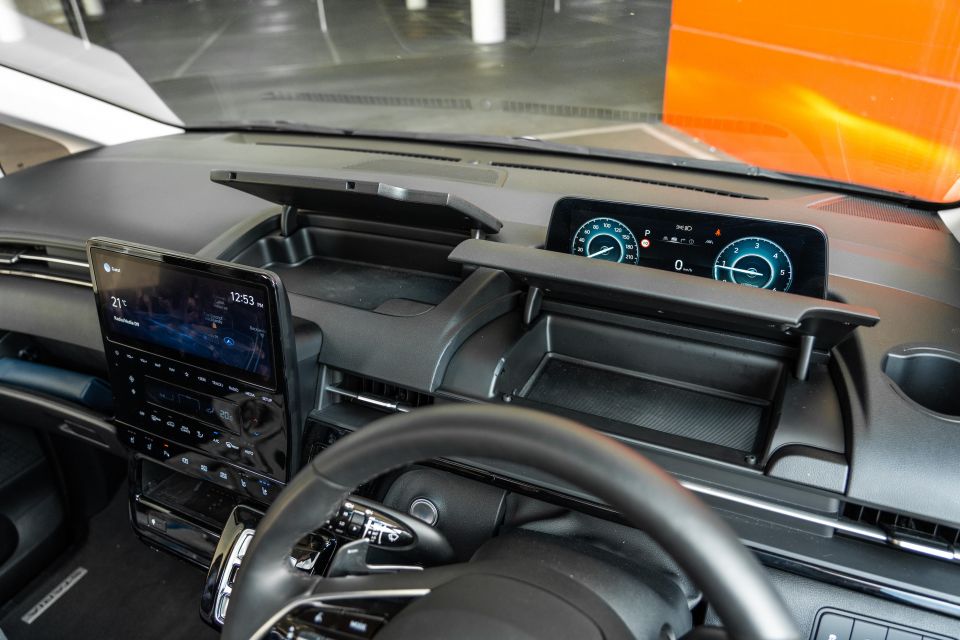
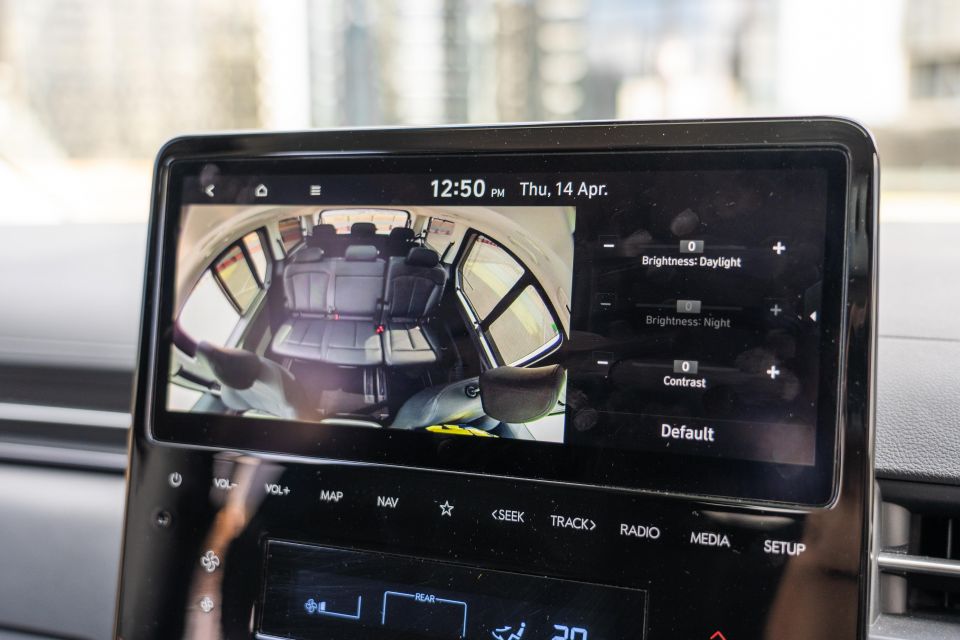
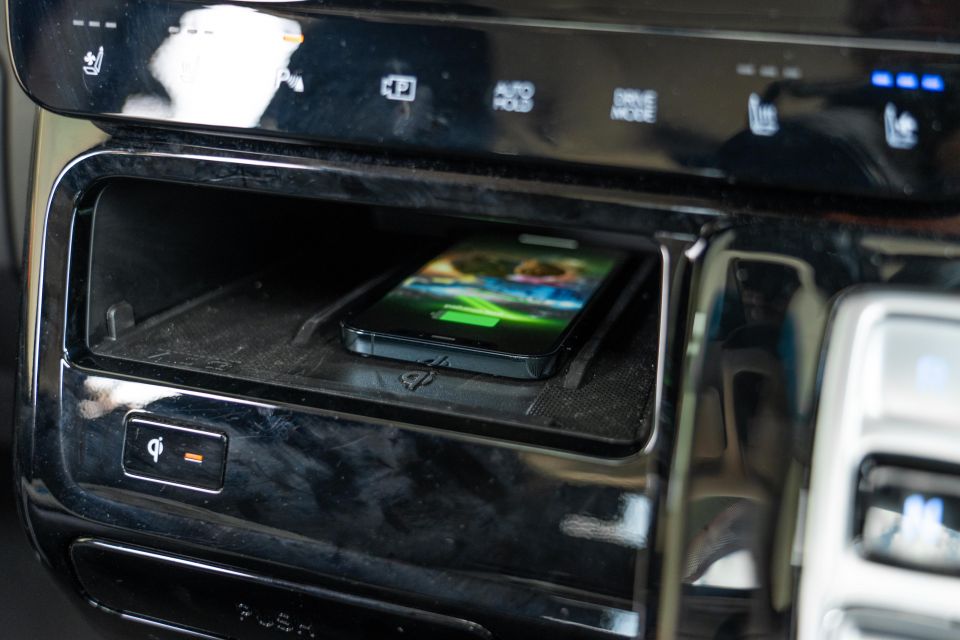
The 10.25-inch touchscreen is shared with high-spec versions of most of the Hyundai line-up. Embedded navigation is nice, as is the inclusion of Apple CarPlay and Android Auto – though they aren’t wireless like the non-navigation 8.0-inch touchscreen in the base model.
It also lacks the latest Hyundai Bluelink app compatibility that debuted with the facelifted Palisade SUV. We expect this to become available as part of a mid-life update for the Staria, or even a running production change.
Storage is plentiful up front, if the abundance of cabin space wasn’t enough already.
There’s cubbies, nooks, crannies and shelves everywhere, including a charging pad for your phone, as well as heaps of storage for your keys, wallets, and kid-related stuff. The bin between the front seats is large enough to swallow a road trip’s worth of drinks and snacks.
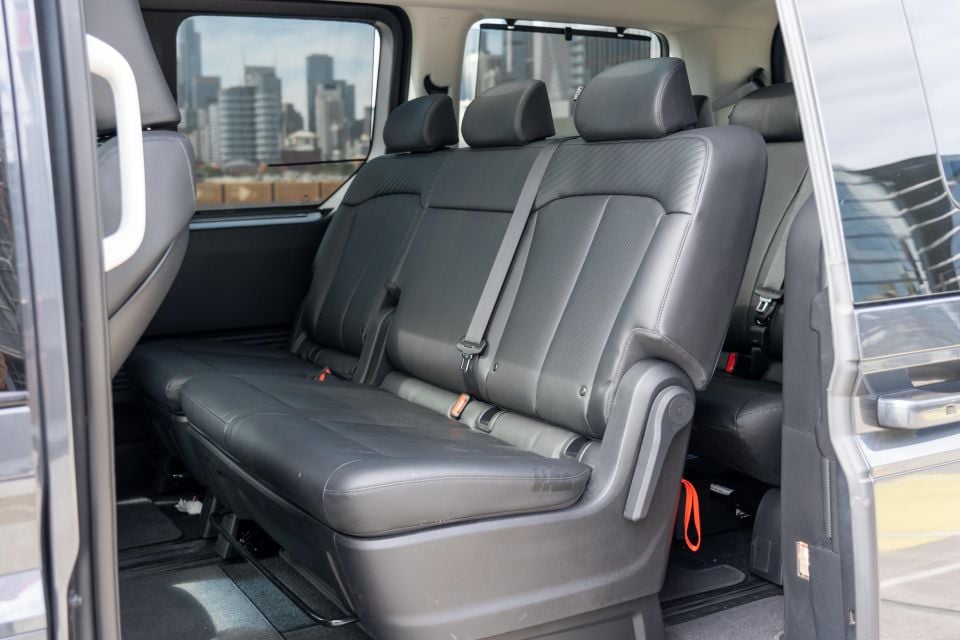

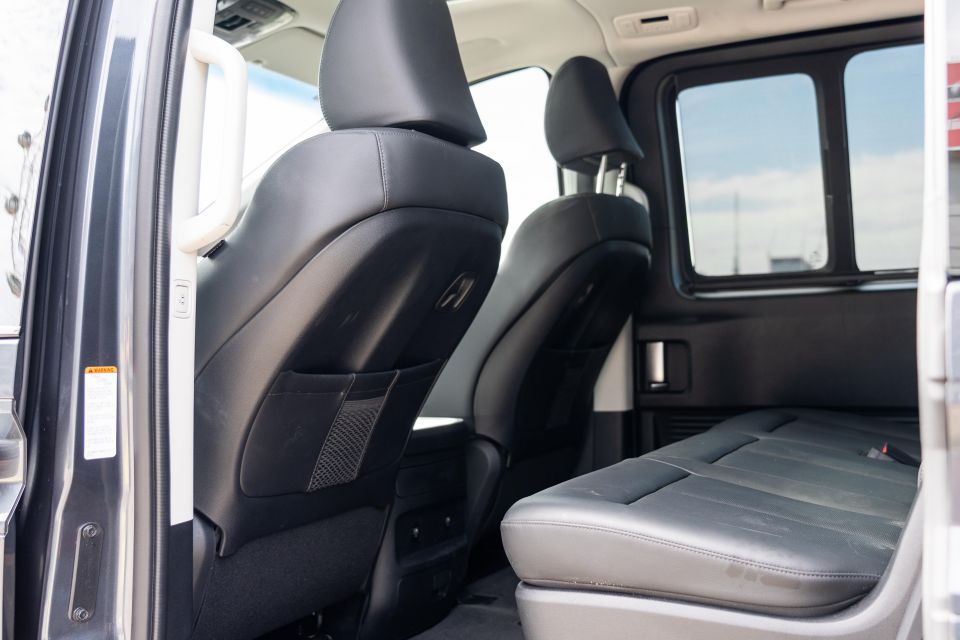
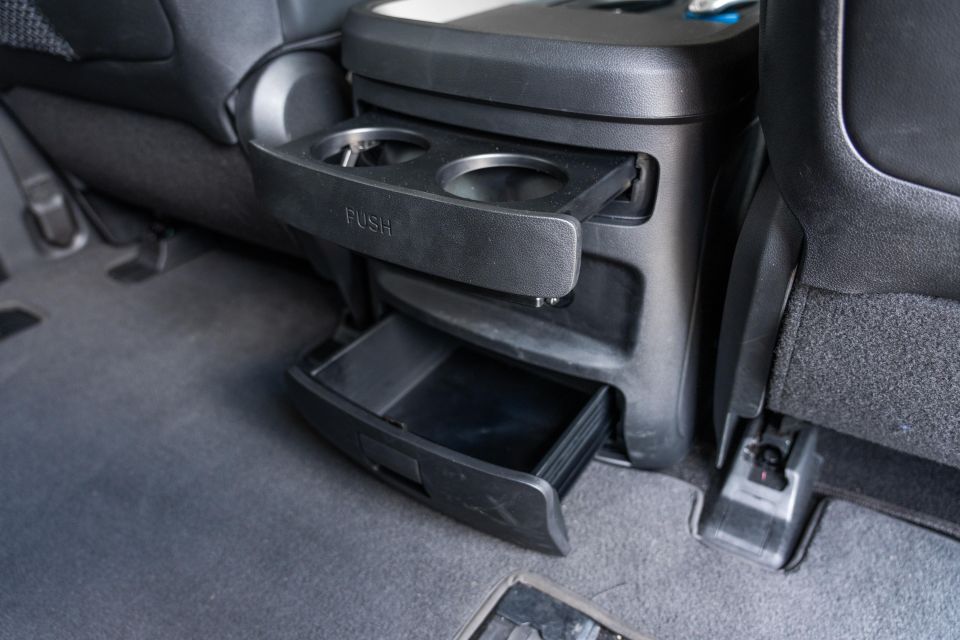
Moving to the second row, there’s a full-size sliding bench that can properly accommodate three adults – this was put to the test during my Easter long weekend trip as well.
Oddly there’s only ISOFIX anchors on the outer second-row seats, and top-tether points across all three second-row positions.
Roof-mounted vents feed air from the auto climate control system, and there’s sliding windows and electrically-operated side doors. A big dual sunroof means there’s plenty of light in the rear too.
Cupholders, storage draws and map pockets offer neat places to store more stuff, and there are manual sunshades for those big side windows if the Australian sun gets a bit hot.
To access the third row, which is a sliding bench on rails much like the second, the 60-portion of the second-row flips down and slides out of your way. The electric side doors and tall entry way make for good access.
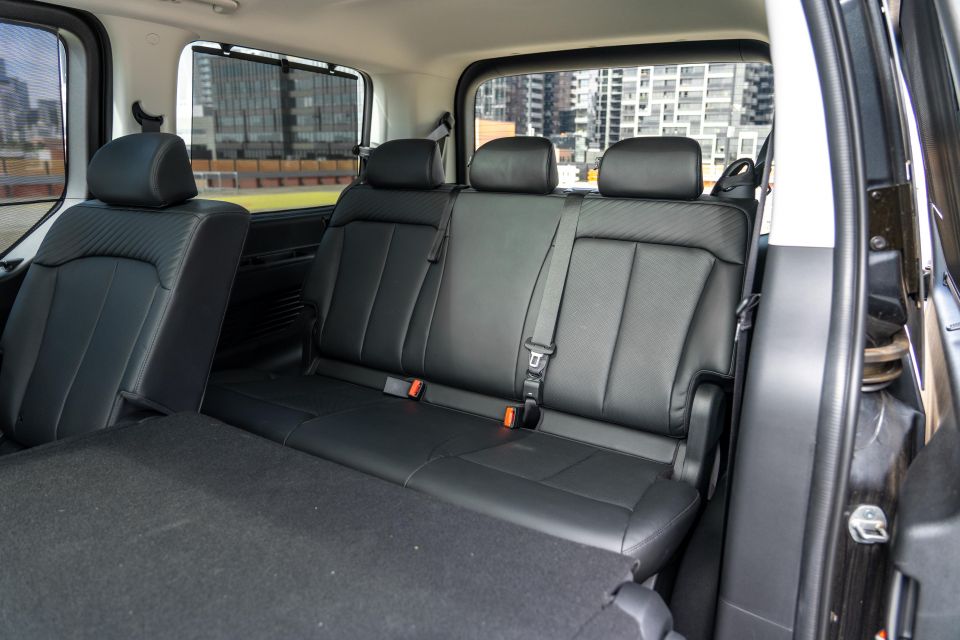
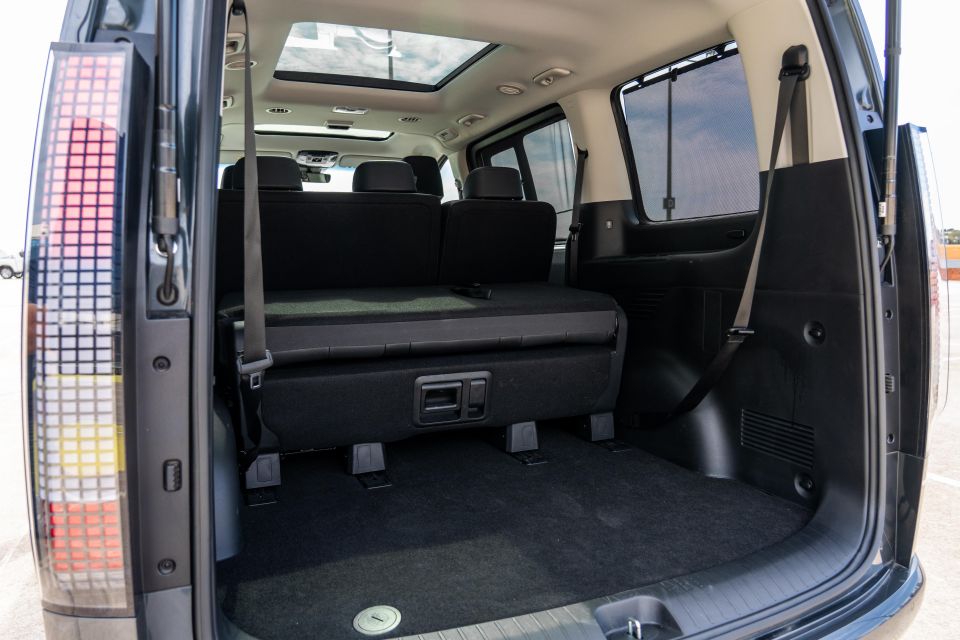
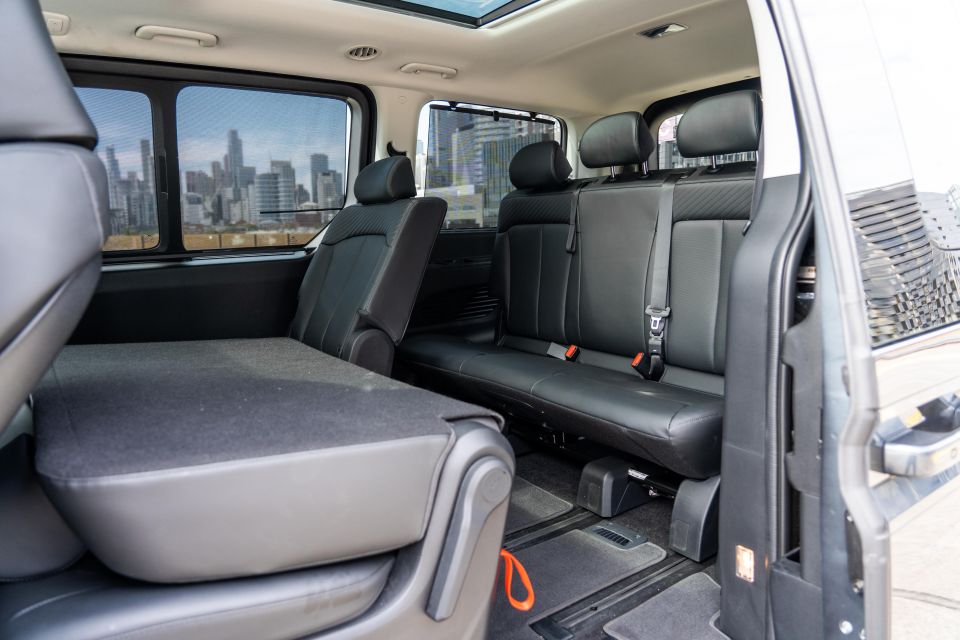
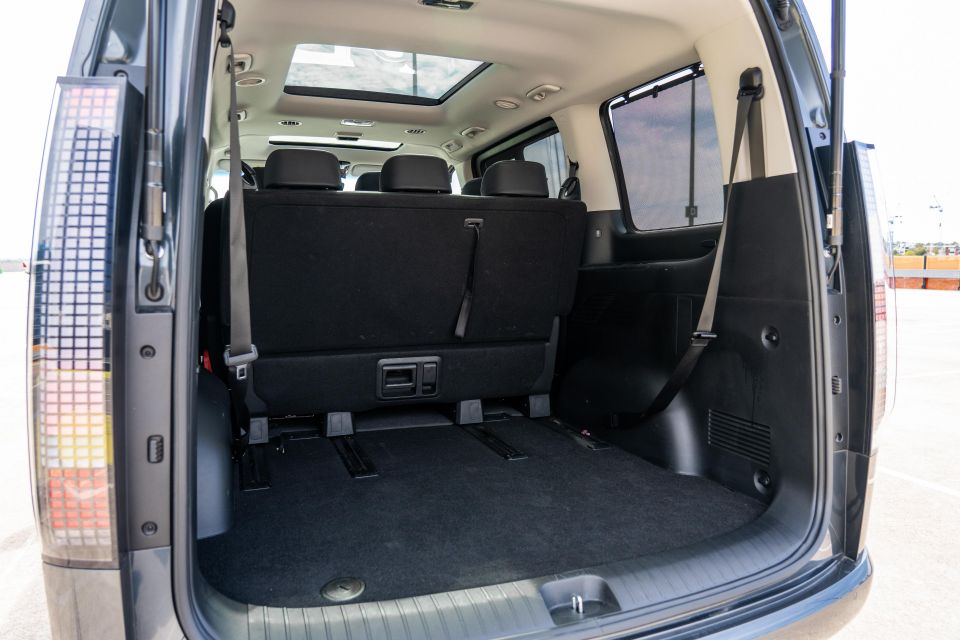
Again, like the second row, you can fit three adults across in reasonable comfort, though you won’t find ISOFIX or top-tethers in the rear like you get in some rival MPVs and SUVs. Seems like a missed opportunity.
There’s manual sunshades and roof-mounted vents, and the big rear portion of the sunroof doesn’t quite stretch to the third row but still lets in plenty of light into the rear section of the cabin.
Boot space is rated at a minimum 831 litres with the third row up and in use, expanding to 1303L from the second row. The rearmost seats don’t fold into the floor, but you can fold them down or push them right up against the second-row seats to maximise cargo-carrying capacity when you need it.
The massive electric tailgate takes some of the heavy work out of accessing the boot, and the Staria’s tall, boxy dimensions means you can fit just about anything back there. A full-size alloy spare lives under the floor.
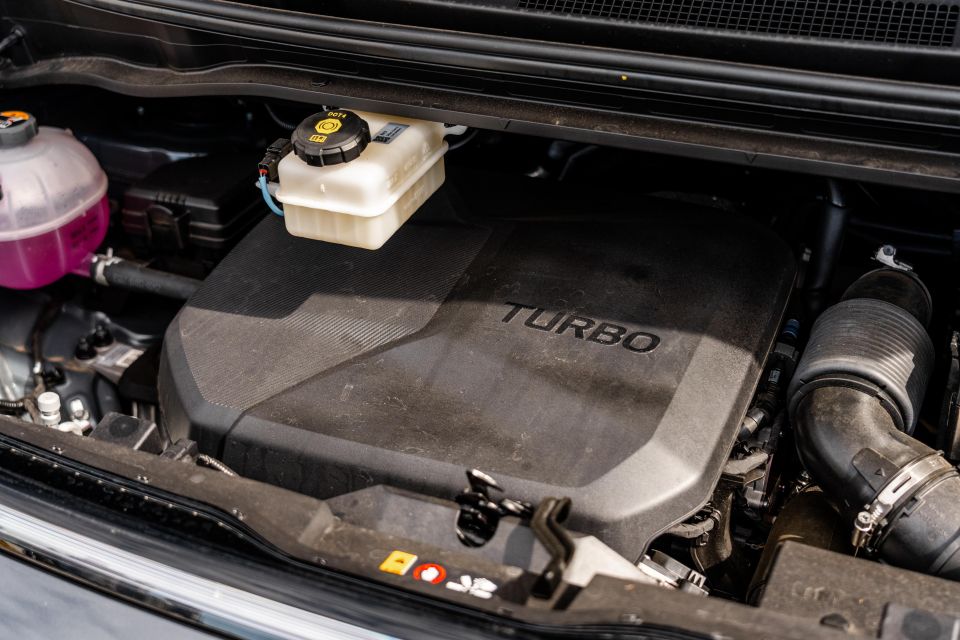
Diesel versions of the Hyundai Staria run 2.2-litre four-cylinder turbo-diesel outputting 130kW (3800rpm) and 430Nm (1500-2500rpm). Drive is sent to an on-demand all-wheel drive system via an eight-speed auto transmission.
You’ll notice outputs are a bit down on the Carnival’s similar diesel engine (148kW/440Nm), though as noted earlier the Staria offers all-wheel drive. It’s likely down to its more commercial-leaning focus that it gets the lesser tune.
The Euro 5-certified oiler claims to use 8.2L/100km on the combined cycle, with CO2 emissions rated at 218g/km. By comparison, the 3.5-litre petrol V6 2WD quotes 10.5L/100km and 239g respectively.
All versions of the Staria feature a 75-litre fuel tank, and the braked tow capacity is rated at 2500kg.
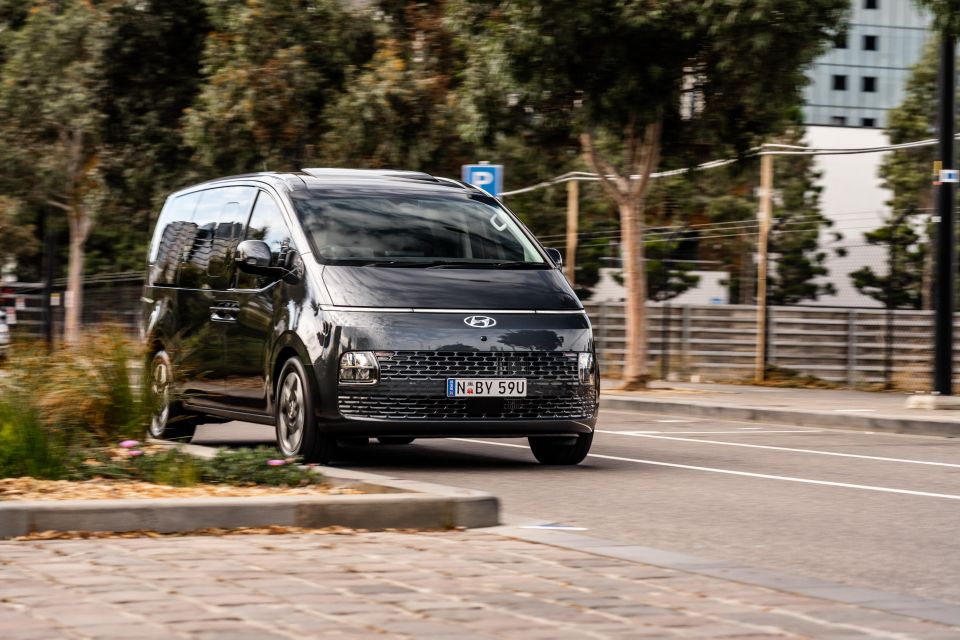
While the Staria is a long, boxy van, it’s underpinned by the Hyundai Group’s N3 large car architecture; which serves as the basis of the Hyundai Sonata, Tucson and Santa Fe, as well as the Kia Sportage, Sorento and Carnival.
That means it should drive and handle more like a unibody SUV rather than a commercial van – and it does, mostly.
The driver controls are all light, predictable and fluid like its platform mates, and despite the dimensions it’s actually quite easy to drive in town. Having that panoramic glasshouse and cameras all round makes it a little bit better.
While it can’t fully hide its height or its heft, the Staria is a cooperative urban companion for such a large bus and is generally quite refined for the segment – though this is an area where the Carnival bests it.

Its heavy-duty take on N3 underpinnings also means it’s a little less refined than some of its stablemates. You’ll find in town there’s a bit more road and wind noise, as well as engine noise (though not unbearable by any means), and the ride is quite taut particularly at the rear.
Most of my time with the Staria was spent one-up commuting to and from work, but it made a lot more sense once I hit the road with my friends and my sister on Good Friday Eve for our long weekend road trip – a circa-600km round trip to Yarrawonga on the NSW border.
The Staria is again agreeable on the highway, if not quite as refined or comfortable as a Carnival, and the surety of all-wheel drive means you can cruise with confidence even when the conditions get a bit… moist.
At 100-110km/h you get a bit more wind noise off the upright body and big mirrors, and there’s a bit of road noise coming from underneath particularly over coarser sections of blacktop. You can crank up the sound system to curb this, but the basic six-speaker audio system can get a bit shaky at full blast – it’s a shame the Highlander doesn’t get a higher-end system given the price point.
The ride settles with a bit of weight in the back and at higher speeds, but again you’ll feel a bit more of road acne through the floor, and it and send thuds into the cabin which wouldn’t be the case in something like a Carnival.
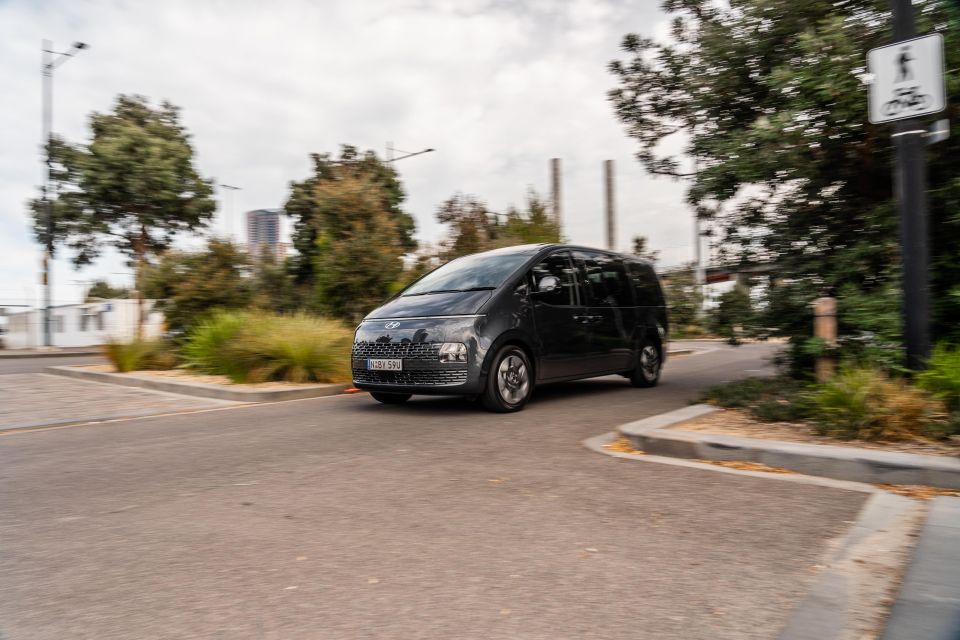
Performance from the 2.2-litre four-cylinder turbo-diesel is adequate but not exemplary, particularly when you load it up.
For reference, the Staria 2.2D AWD’s power-to-weight ratio is 57.2kW/tonne versus 75.7kW/tonne in the lighter and more powerful Palisade 2.2D AWD. So from the get-go, the Staria feels a little less eager than its SUV equivalents.
The diesel’s 430Nm comes in from a low 1500rpm, meaning it has a strong lower end that pulls strongly in a stately, effortless fashion. Just don’t expect to be winning any traffic light drag races, and don’t go driving this around the suburbs in Sport mode.
On the highway the Staria settles into a cruise quite nicely, sitting at around 1800rpm in eighth gear at 110km/h, though if you need to make a quick overtake it takes a bit more room – as I found out on a couple of occasions. The diesel can feel like it’s running out of puff at the top end with a few people on board.
The eight-speed automatic is a worthy companion and generally gets the best out of the engine’s peak bands. It also shifts smoothly and doesn’t suffer from any low-speed jitters.

In some of the darker sections of country highway en route to Yarrawonga I noticed the reflector-type LED headlights with auto high-beam weren’t quite as good as I would have liked. Staria Lounge models in its home of South Korea have higher-end projector units, which no doubt would offer a stronger, crisper beam.
The suite of active driver assists did impress, however. Adaptive cruise control with Lane Following Assist (centring) meant I wasn’t constantly correcting the lane position of this big bus, and like we’ve found in other Hyundai models the technology is pretty intuitive.
Same goes for the blind-spot assist and Blind Spot View Monitor systems, which come in particularly handy in the Staria given its 5253mm length and lofty driving position. There’s no excuses to miss a car coming up on either side.
Likewise the surround cameras with 3D view and parking sensors on both ends make tighter manoeuvres in this thing much easier. I had no issues parallel parking into some tighter gaps or navigating skinny tennis club car parks.
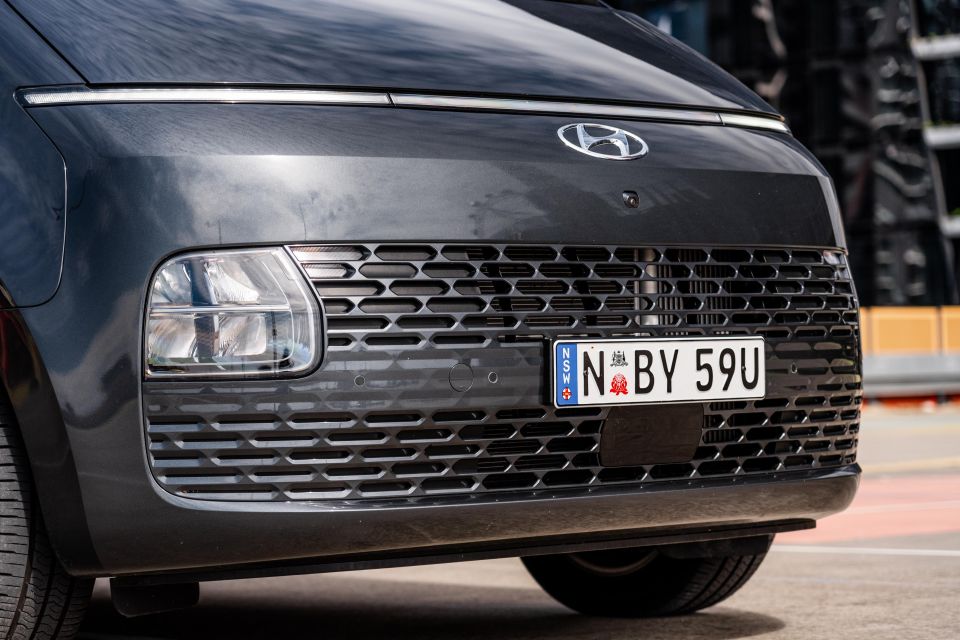
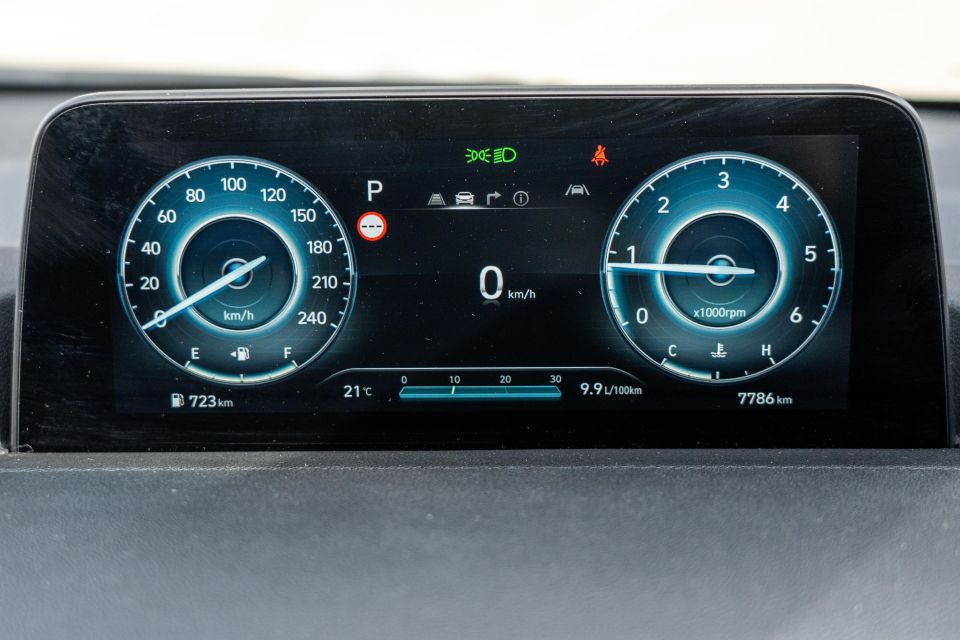
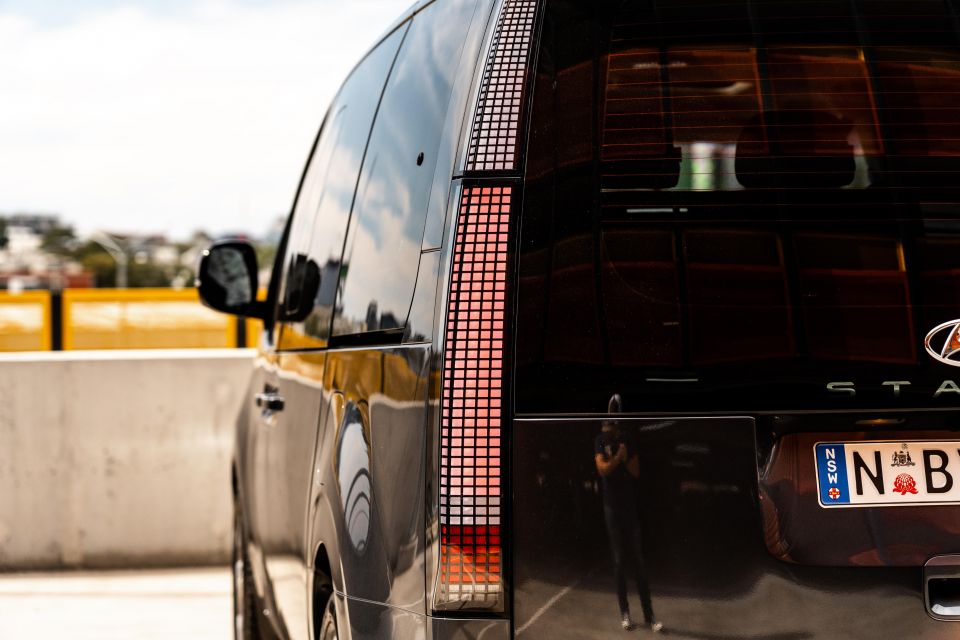

Staria Highlander highlights:
Specification carried over from lower grades includes:
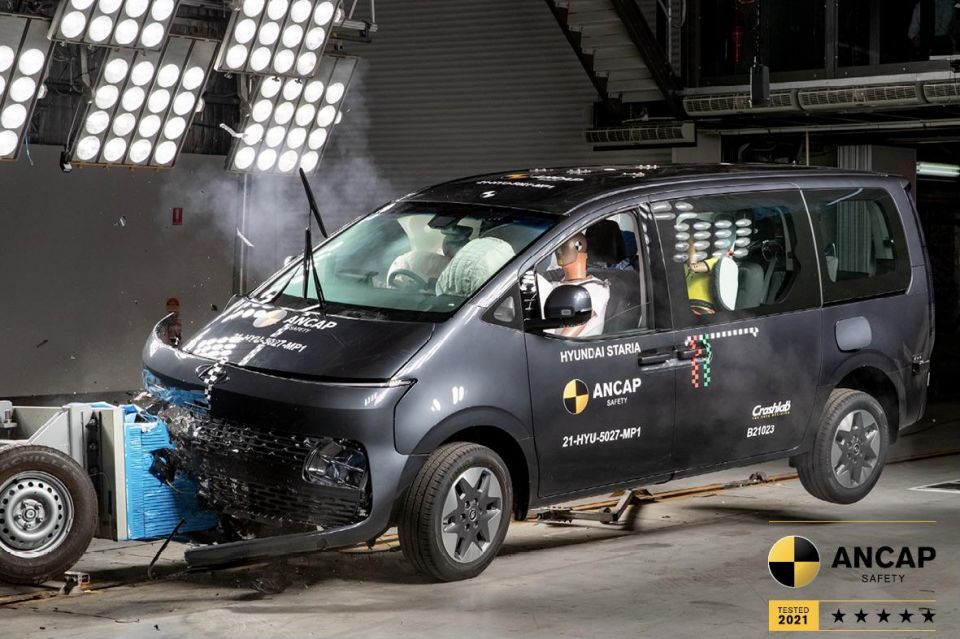
Where expert car reviews meet expert car buying – CarExpert gives you trusted advice, personalised service and real savings on your next new car.
The Staria was awarded a five-star ANCAP safety rating in December 2021.
Category scores included 85 per cent for adult occupant protection, 86 per cent for child occupant protection, 65 per cent for vulnerable road user protection, and 74 per cent for safety assist.
The Staria’s crash results are against the latest and most stringent 2020-22 crash protocols. The result applies to both petrol and diesel drivetrain variants, though only automatic transmission models are covered by the result.
Further, the related Staria Load commercial van version received the same rating.
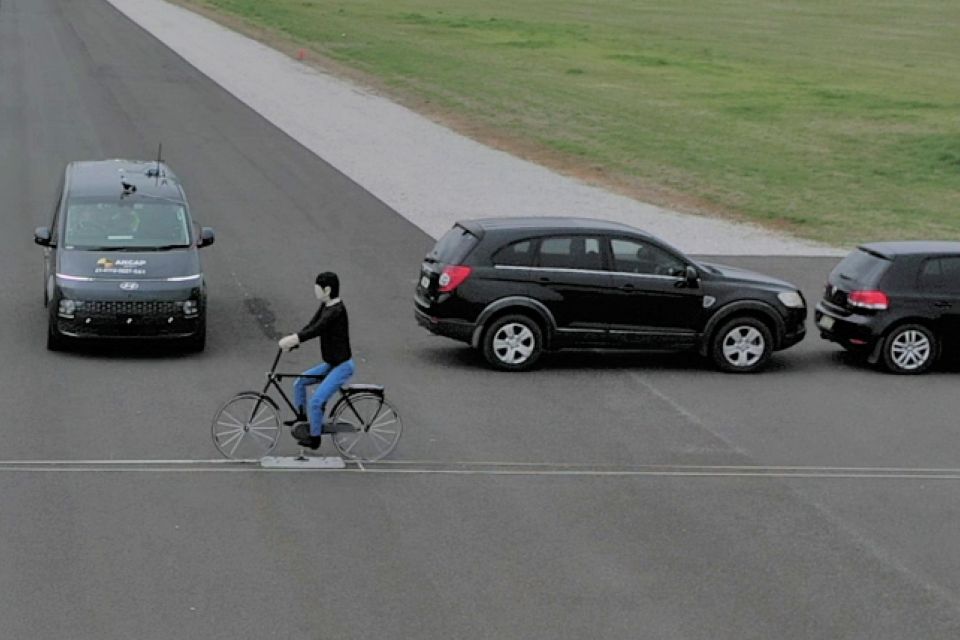
Standard safety features include:
Staria Elite adds:
Staria Highlander adds:
There are also ISOFIX child seat anchors on the outboard second-row seats plus top-tether anchors, but there are no anchors in the third row.
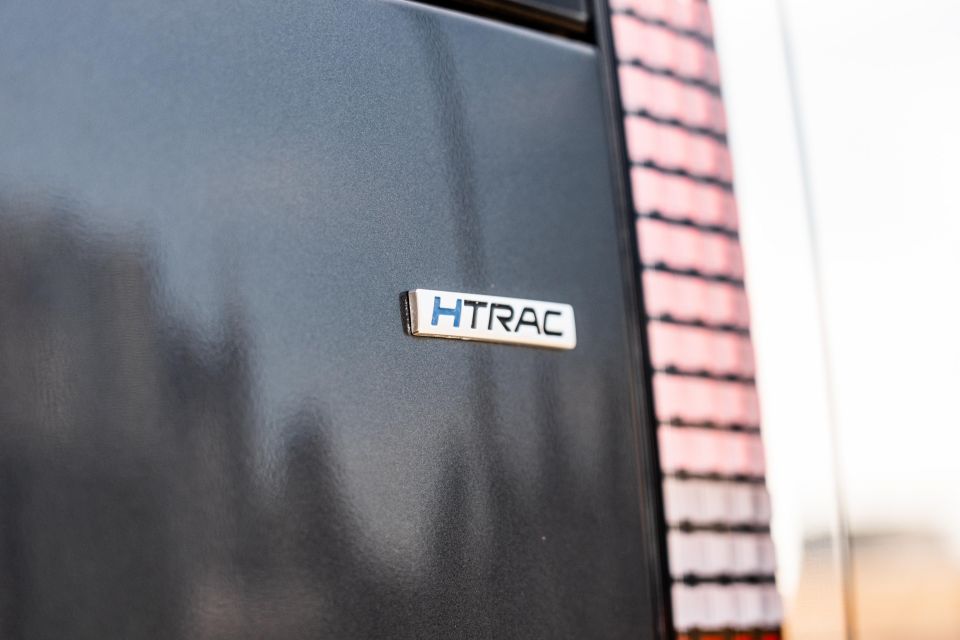
Like the wider Hyundai line-up, the Staria is covered by a five-year, unlimited-kilometre warranty, with roadside assistance and satellite navigation updates included for up to nine years after initial sale.
Scheduled maintenance is required every 12 months or 15,000 kilometres – whichever comes first. You can either pay as you go on Hyundai’s Lifetime Service Plan, or pre-pay for three, four or five years.
For the Staria Diesel AWD, the three-year plan costs $1080, the four-year plan $1440, and the five-year plan $1800.
In terms of real-world fuel consumption, we averaged 8.7L/100km over 840km of mixed driving, including our return trip to Yarrawonga and some daily commuting to and from the office. Half a litre off the combined claim, not bad.
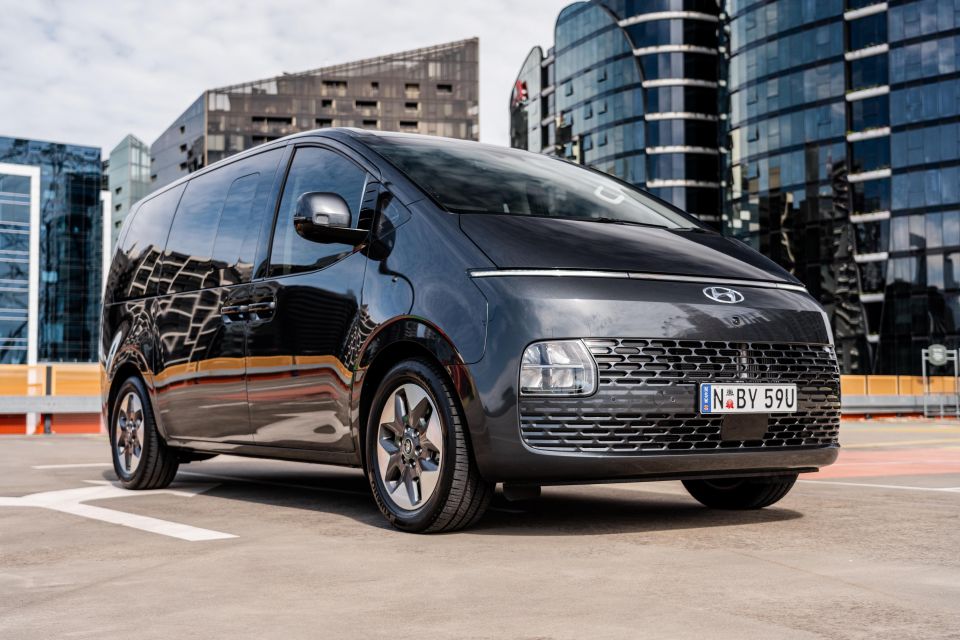
While SUVs are the are the flavour of recent times, there’s still a case to be made for a proper family van.
The Hyundai Staria’s move to passenger car underpinnings helps it to balance everyday driveability with the practical benefits of a commercial van-based people mover, and presents as a lot of metal for the money.
It’s unique offering of a diesel engine and AWD is unheard of at the mainstream end of the MPV market, and it has all the tech and features you’d expect of a high-end Hyundai. Plus, it’s a relatively comfortable and refined way to cart seven passengers and their stuff around.
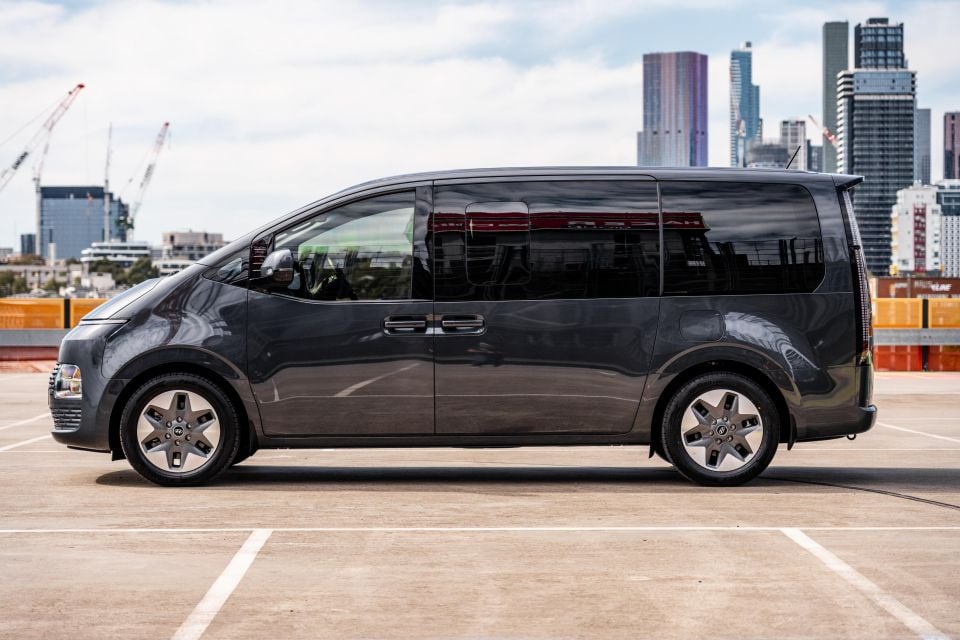
Most will still see the Kia Carnival as the benchmark, given it blends the MPV and SUV worlds so well, but even the Staria’s Korean sibling cannot match it for outright space – and the Staria Highlander gets a digital cluster and Blind Spot View Monitor which are still unavailable on local Carnival models.
Minor grievances include the lack of child seat anchorages in the third row, as well as absent features like a powered front passenger’s seat and premium audio system that you’d expect for the price point.
Better headlights wouldn’t go astray either if you’re shuttling people through poorly-lit areas on the regular, and the third-row seats can also make the boot an awkward shape when they’re not in use. Still, it’ll carry heaps of stuff.
It may not be conventionally handsome, but the Staria is definitely worth a look if you don’t mind buying a van.
Click the images for the full gallery
Where expert car reviews meet expert car buying – CarExpert gives you trusted advice, personalised service and real savings on your next new car.
James Wong is an automotive journalist and former PR consultant, recognised among Australia’s most prolific motoring writers.


Damion Smy
4 Days Ago


Derek Fung
1 Month Ago
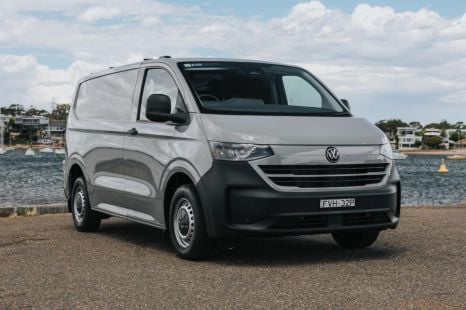

Ben Zachariah
1 Month Ago
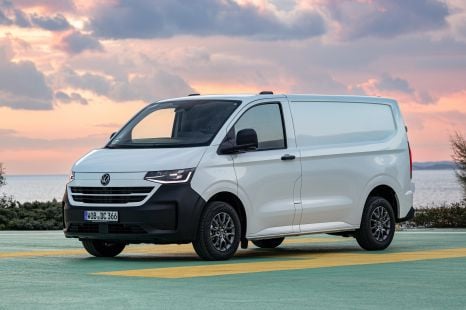

Ben Zachariah
1 Month Ago


William Stopford
1 Month Ago
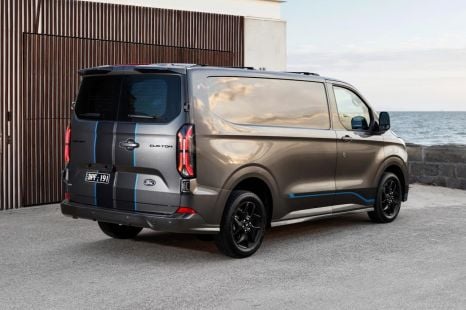

Ben Zachariah
2 Months Ago